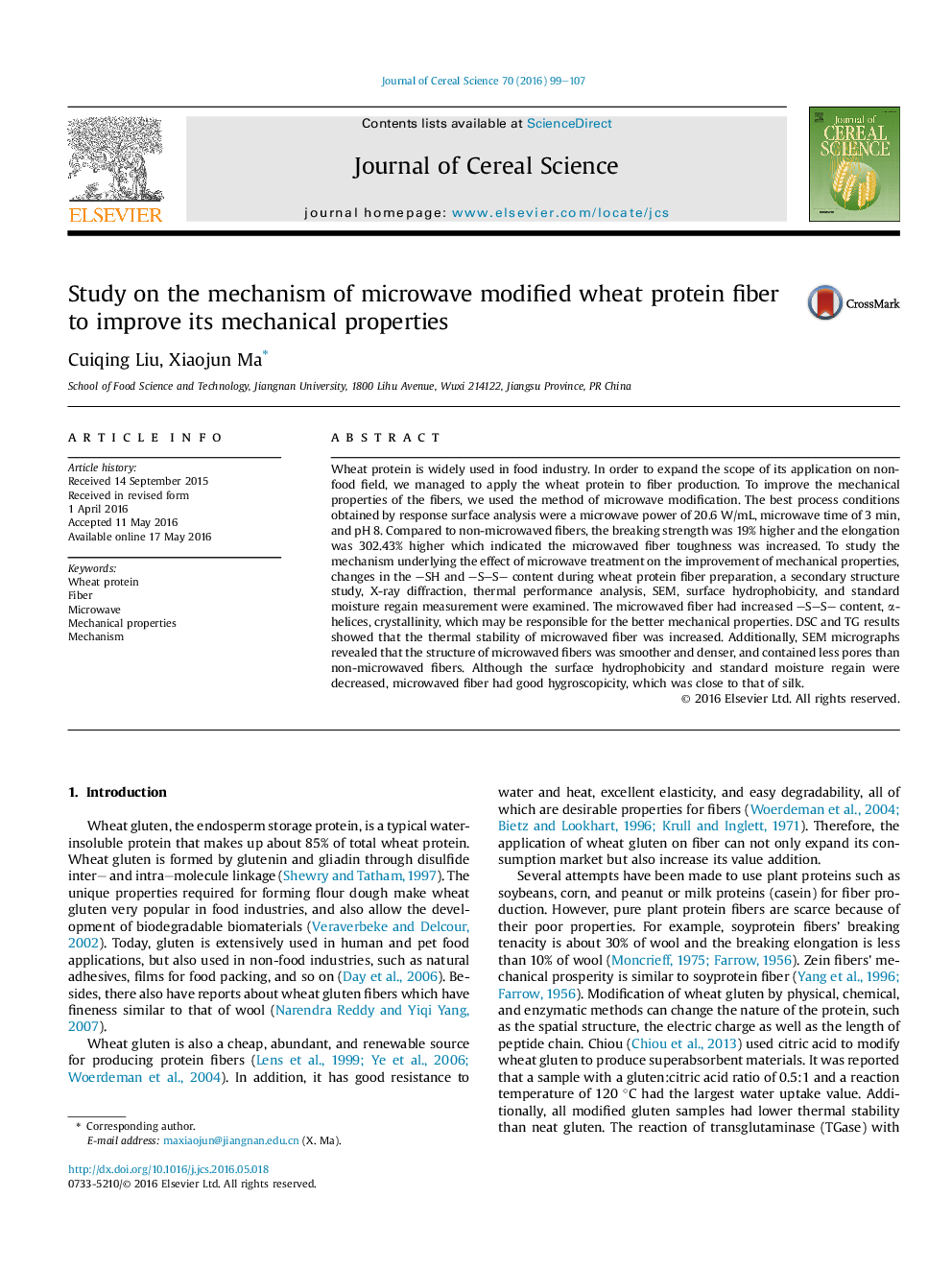| کد مقاله | کد نشریه | سال انتشار | مقاله انگلیسی | نسخه تمام متن |
|---|---|---|---|---|
| 4515483 | 1624892 | 2016 | 9 صفحه PDF | دانلود رایگان |
• The breaking strength and elongation were increased by 19% and 302.43% respectively.
• Microwaved fiber has higher content of SS, α-helices and crystallinity.
• The treatment increases the thermal stability of wheat protein fibers.
• The treated fiber has a smoother and denser surface and less pores.
• The fiber has a good standard moisture regain and increased surface hydrophobicity.
Wheat protein is widely used in food industry. In order to expand the scope of its application on non-food field, we managed to apply the wheat protein to fiber production. To improve the mechanical properties of the fibers, we used the method of microwave modification. The best process conditions obtained by response surface analysis were a microwave power of 20.6 W/mL, microwave time of 3 min, and pH 8. Compared to non-microwaved fibers, the breaking strength was 19% higher and the elongation was 302.43% higher which indicated the microwaved fiber toughness was increased. To study the mechanism underlying the effect of microwave treatment on the improvement of mechanical properties, changes in the SH and SS content during wheat protein fiber preparation, a secondary structure study, X-ray diffraction, thermal performance analysis, SEM, surface hydrophobicity, and standard moisture regain measurement were examined. The microwaved fiber had increased SS content, α-helices, crystallinity, which may be responsible for the better mechanical properties. DSC and TG results showed that the thermal stability of microwaved fiber was increased. Additionally, SEM micrographs revealed that the structure of microwaved fibers was smoother and denser, and contained less pores than non-microwaved fibers. Although the surface hydrophobicity and standard moisture regain were decreased, microwaved fiber had good hygroscopicity, which was close to that of silk.
Journal: Journal of Cereal Science - Volume 70, July 2016, Pages 99–107
